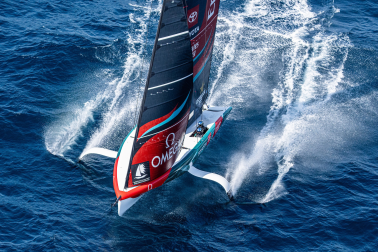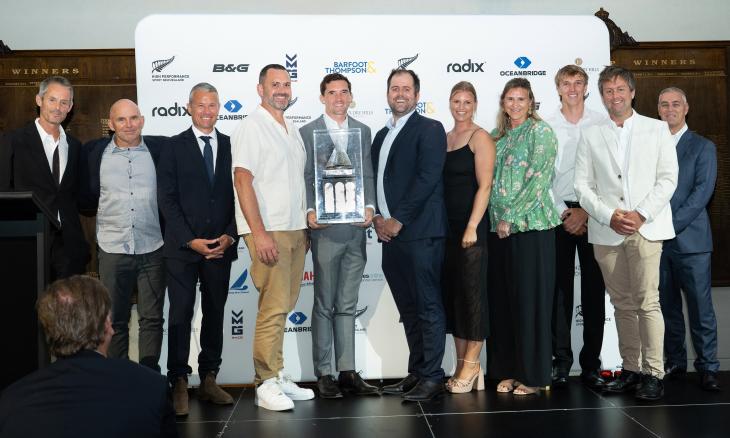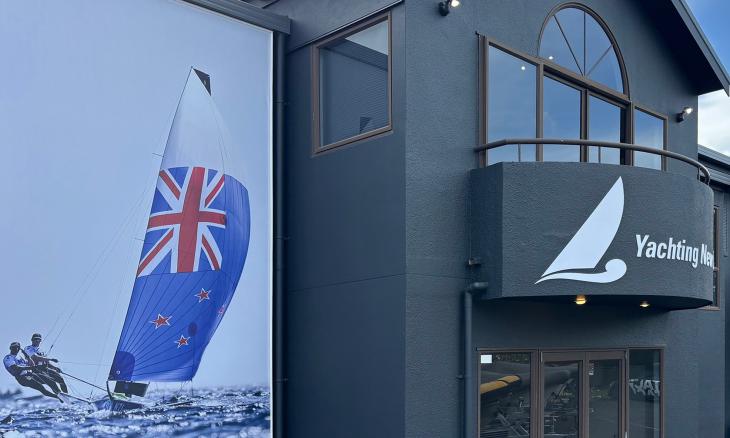Time is fast running out in the campaign for the 37th America’s Cup.
In less than six months, the six competing syndicates will descend on the waters of Barcelona in their quest to get their hands on the Auld Mug.
Before then, plenty of water needs to pass under the hull and for Emirates Team New Zealand, that timeframe is condensed by the fact they lose about six weeks as they must ship their AC75 from Auckland to Spain.
It’s a factor the defender has long been aware of, and one they have worked around. Now, as they prepare to launch their new race boat in Auckland in April, chief operating officer Kevin Shoebridge says the team are close to hitting all the targets they had mapped out.
“You always want a bit more time to make decisions because you keep developing and getting better. But there are cut-offs at some point where you just have to make a decision,” Shoebridge says.
“We’re not late on anything. The boat is right on target to dates that we set over a year ago.”
Over the last couple of months, those targets have covered plenty of areas both on and off the water. Since returning from the second preliminary regatta in Jeddah (Saudi Arabia) late last year, Team New Zealand have been hard at work on their LEQ12 – a test boat that must be “less than or equal to 12 metres in overall length” – with one of the key areas of focus being on foil testing.
The team broke out their final two of their four allotted test foils during that period, deliberately leaving that until a little bit later in the campaign to allow their designers to learn and develop them as much as possible.
“It’s been a particularly busy time. It’s that period in the campaign where you’ve got to make a lot of decisions and a lot of the decisions are really important, obviously,” Shoebridge says.
“The development will never stop right through to the America’s Cup, but a lot of the big decisions are being made right now.”
Team New Zealand have a new-look crew on board for this time around, with Nathan Outteridge brought in to share helming duties with Peter Burling in a move that has proved to be a masterstroke from the Team New Zealand brass.
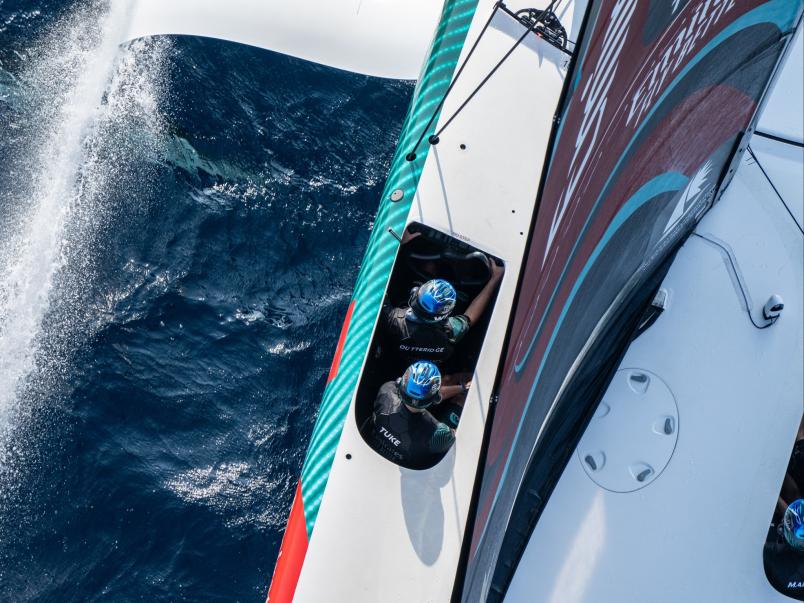
Emirates Team New Zealand's core group of sailors - Peter Burling, Nathan Outteridge, Andy Maloney and Blair Tuke - have worked well together. Photos / America's Cup, ETNZ
Across the two preliminary regattas – in Vilanova i la Geltru (Spain) and Jeddah – Team New Zealand have been the most consistent performer on their way to finish second and first at those two events, respectively. Going into the final preliminary regatta in Barcelona in August – the first time the new AC75s will be in action – they sit atop the preliminary leaderboard and will be looking to set the tone when they get back in race mode.
Their performance in Jeddah, in particular, showed just how well the core group of Burling, Outteridge, Andy Maloney and Blair Tuke worked together.
That came after a solid four-month block in Barcelona, where they were able to break out the AC75 on which they retained the Auld Mug in Auckland, Te Rehutai, and put some work in with the new configuration that will see two helmsmen operating to eliminate the need for sailors to swap sides of the vessel.
“I think we’re in a good place,” Shoebridge says.
“When you look back to how we sailed the boat in the last Cup, running from side to side, it just wasn’t efficient. We’re now sailing the boat in this environment and how good the communication is between the guys on board, it really is a big step up. It just feels a whole lot better. I think we’re sailing more accurately and tactically better, trimming is better, everything’s better.
“But everyone’s going to do that. All the teams should do that. But there are definitely some gains in having that group of guys doing a lot of sailing together. Nathan’s fit in really well with our group and he brings a lot to the table. It’s all working well.”
While the helmsmen, flight controllers and wing trimmers have been testing in the LEQ12 in Auckland, the cyclors have been hard at work off the water with a training programme that includes “a lot of sessions in the gym”, as well as getting on the road and riding as well.
The return of the cyclors as an option in the power unit was among the talking points when the protocol was released for the 37th edition of the Cup. While teams can still opt for the traditional grinding pedestals, a drop in crew numbers from 11 to eight this time around means there are fewer bodies providing the power.
With that in mind, Shoebridge said he expects all teams would adopt cyclors.
“We’ve always been a fan of it and took it to Bermuda on the cat. We’re really happy with that decision; I would imagine everyone will probably go down that route,” he says.
“There’s no arguing that there’s more power and efficiency provided doing it this way and with less crew on board, you’ve only got four guys providing the power, so they need everything they can get because the boats require a lot of power.
“We’re working pretty hard with those guys and their training to be the best they can to provide us with the power we want to be able to get as much control as we can.”
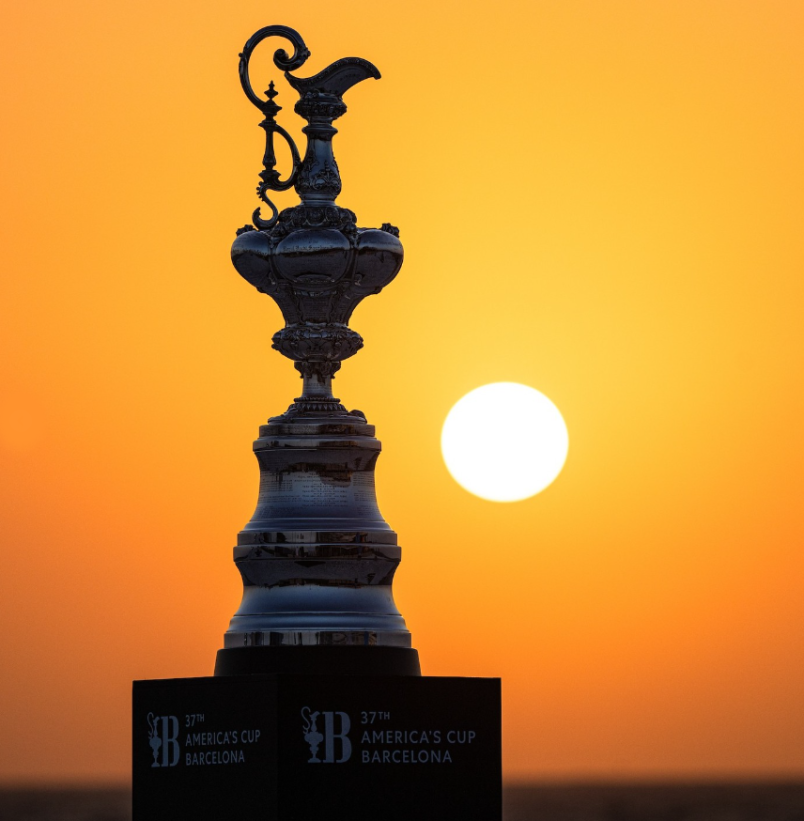
The 37th America's Cup takes place in Barcelona. Photos / America's Cup, ETNZ
During their time in Barcelona last year, Team New Zealand were able to get the full-scale team on board for an important block in their campaign, where they could make the most of a wide range of conditions; the potential for racing in a bumpy sea state among the key challenges faced in the Spanish waters that wasn’t seen in Auckland last time around.
While several of the challengers have made the most of their proximity to the Cup venue and spent time developing their own packages, Team New Zealand needed to gather as much data as possible while they were there – getting plenty of good reps on both their AC75 and AC40, as Shoebridge explains.
“That was really important for us with learning how to sail the big boat in the conditions out there. It’s a vast range of conditions.”
The challengers
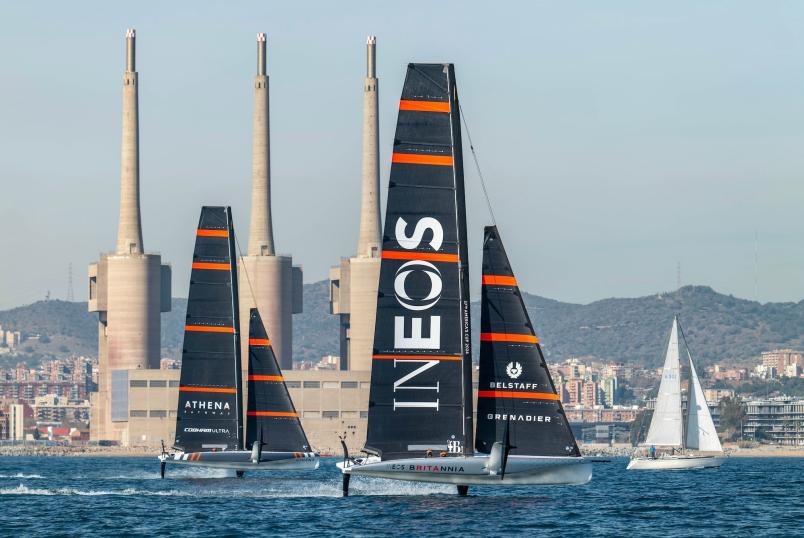
Ineos Britannia
Royal Yacht Squadron, UK
Challenger of Record
The British syndicate wasted no time in becoming challenger of record for the 37th America’s Cup, with Royal Yacht Squadron personnel on-site to make their challenge almost as soon as Emirates Team New Zealand had successfully defended on home waters.
They will again be led by Sir Ben Ainslie, with a largely settled sailing team including Giles Scott and Luke Parkinson among the other familiar names on the boat.
In Auckland, they were one of the most followed storylines during the regatta as they struggled mightily in the preliminary regatta before impressing in the round robin stages of the challenger series.
They’ve been busy over the last few years, teaming up with the Mercedes Formula 1 team to design their new AC75, and getting in plenty of reps in Barcelona in both testing and racing on
their AC40 and LEQ12, as well as on their last AC75.
Luna Rossa Prada Pirelli
Circolo della Vela Sicilia, Italy
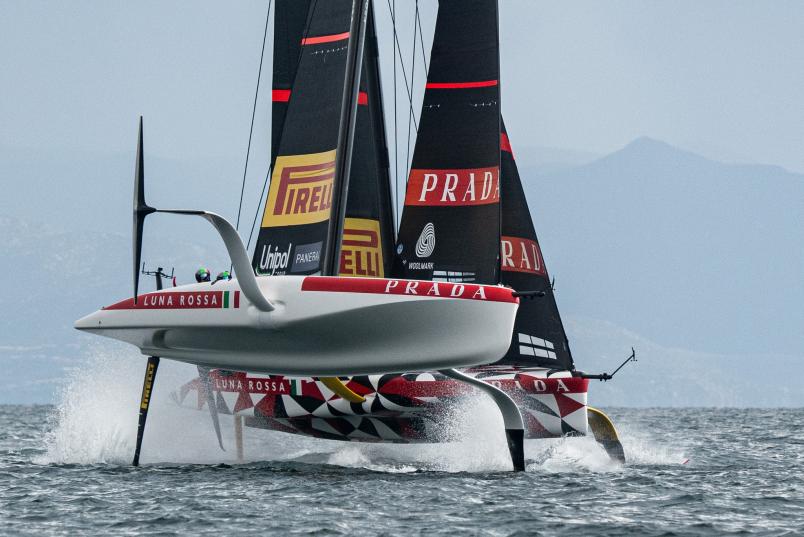
Beaten by Emirates Team New Zealand in the Cup match in Auckland, the Italians return for another attempt at dethroning the Kiwis.
Jimmy Spithill and Francesco Bruni again shape up as key contributors for Luna Rossa on race day, though it was the impressive young helming duo of Marco Gradoni and Ruggero Tita that led the team to runners-up at the preliminary regatta in Jeddah.
They have carried out much of their testing in Cagliari, most recently practicing race strategies and management with some two-boat testing. While they were beaten finalists in the last America’s Cup regatta, they had the revolutionary design element of having two sailors share the helming and flight control responsibilities; a feature that is expected to be adopted by most, if not all, teams in this edition of the Cup.
American Magic
New York Yacht Club, USA
The Americans made a big splash coming into the campaign with the signing of helmsman Tom Slingsby.
The Australian holds a US passport, so qualifies under the Cup’s strict nationality rules. Slingsby is as competitive as they come and has had great success in driving Australia to victory in all three SailGP seasons to date.
However, he wasn’t involved in the regatta in Auckland, so has had no competitive racing in an AC75 yet. American Magic have been among the more competitive teams in the preliminary regattas – racing on AC40s – so far, winning the first event in Vilanova i la Geltru, and being in contention in the second regatta in Jeddah.
They retired their AC75 Patriot late last year and have since focused their campaign on development as their new boat has been built.
Red Bull Alinghi Racing
Société Nautique de Genève, Switzerland
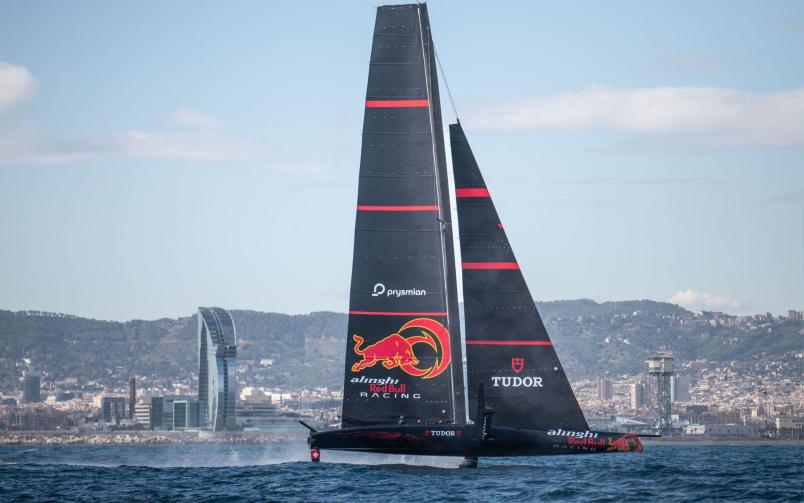
The Swiss will make their first bid to claim the Auld Mug since losing it to Oracle Team USA in 2010 in Barcelona, linking up with Red Bull, who bring the expertise of the Red Bull Advanced Technologies unit that has supported Red Bull Racing to massive Formula One success.
A strong Swiss crew has been assembled to sail, with Arnaud Psarofaghis as skipper, while Kiwis Brad Butterworth and Phil Robertson have been among a number of big-name talents from the sailing word to have offered their services to help the syndicate with their preparations.
Alinghi are one of two teams yet to experience proper racing in an AC75, though they did purchase Emirates Team New Zealand’s first-generation boat early in the campaign so they could spend some time on the water figuring out the vessel.
Orient Express Racing Team
Société Nautique de Saint-Tropez, France
A late entry into the America’s Cup cycle, the French syndicate opted not to design their own AC75 but instead purchased a design package from Emirates Team New Zealand.
That gives them a great starting point because, if nothing else, they’re going to have a competitive boat on the water in Barcelona.
They have a team who are familiar with one another, too, including Kiwi Jason Saunders who operates in the trimming and flight control department.
Saunders will be alongside several of his teammates from the French SailGP team including driver Quentin Delapierre.
They have had some success in the preliminary regattas – shocking everyone when they won the first official race of the cycle by claiming the first fleet race at the preliminary regatta in Vilanova i la Geltru.
The boats
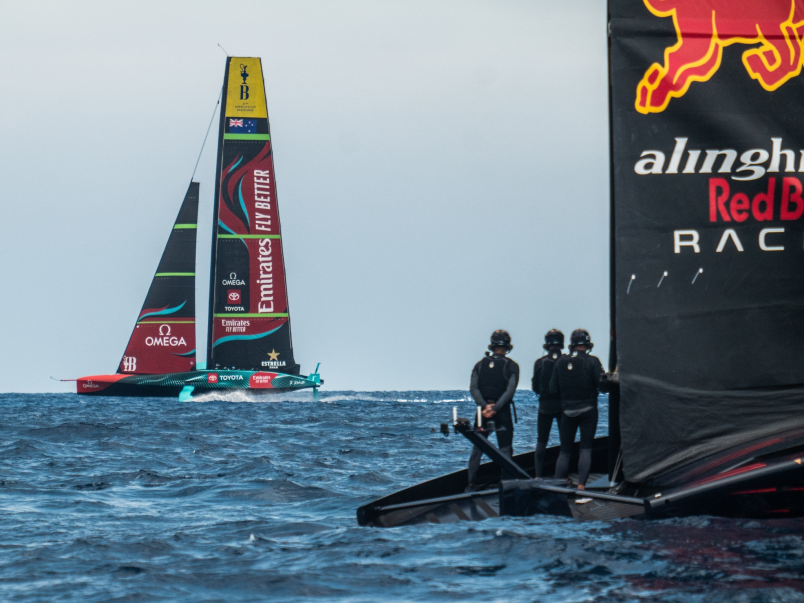
The AC75 is back for another campaign and, by all accounts, better than ever.
What we saw in Auckland for the 36th America’s Cup was the first cycle of the innovative 75-foot foiling monohull.
In Barcelona, with teams having had another four years to play with the concept and find what does and doesn’t work for it, Emirates Team New Zealand expected all six syndicates to come up with more “highly developed” versions of the vessels on display in Auckland.
“When you look at the boat now, the boat that we’re going to be launching soon [compared] to what we had last time, to us, is a big step on. There’s a lot of stuff from the outside that you’ll never see – the control systems and everything, the technique and how you sail the boat – a lot of that stuff you won’t see, but to us there’s been some big steps forward,” chief operating officer Kevin Shoebridge says.
“I would expect all the boats are going to be a big step forward, and who knows? What typically happens with these rules is when you go from one iteration to the next, slowly they all start to merge together. So, they may look similar.”
Among the obvious changes in this generation of AC75s are the return of cyclors rather than traditional grinding pedestals should a team want to go down that route in their power team, and a reduction of onboard crew from 11 to eight. All six teams are expected to operate with a dual helming set up; the helmsman who isn’t steering likely to operate as a tactician. A similar system worked superbly for Luna Rossa Prada Pirelli in Auckland as it removes the need for crew to switch sides of the boat through manoeuvres.
The first of the new AC75s will be launched in early April, with Luna Rossa, Alinghi Red Bull Racing and Team New Zealand the first to submit the two-month notice to the Recon Management Panel and a recon administrator, required before launching their new vessel. Ineos Britannia and American Magic have also targeted an April launch date.
With AC75 racing beginning with the final preliminary regatta in Barcelona in August, Shoebridge says he didn’t expect one feature on any of the boats would be deciding.
“Last time it was new territory so everyone had a different view of what the class would look like, but by the end they start merging,” he says.
“I don’t think there’s any silver bullet where someone will come out with one thing that’s going to win the Cup. It’s not like that. You’ve got to be good and strong in a lot of areas all over the boat and the way you sail the boat.
“Usually if one of those things isn’t right, ultimately you might not be successful.”
Key dates
Preliminary regatta: Aug 22 to 25
Louis Vuitton Cup round robins: Aug 29 to Sep 8
Louis Vuitton Cup semifinals: Sep 14 to 19
Louis Vuitton Cup finals: Sep 26 to Oct 5
37th America’s Cup Match: Oct 12 to 21
